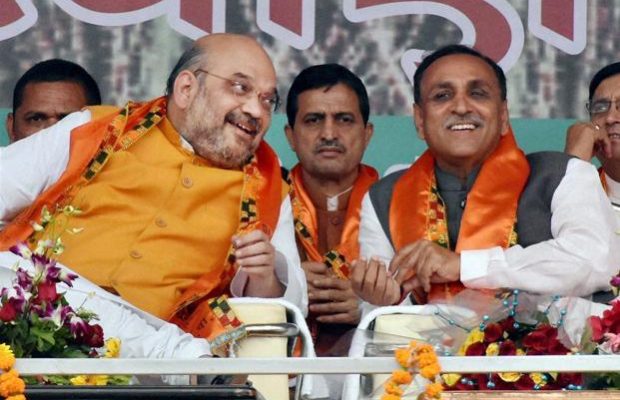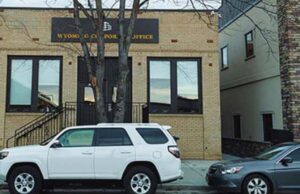Tough road ahead for BJP in Gujarat

Despite handing over the reins of Prime Minister Narendra Modi’s home state of Gujarat to Rashtriya Swayamsevak Sangh (RSS) loyalist Vijay Rupani, the road to victory for the Bharatiya Janata Party (BJP) in the next Assembly elections is seemingly filled with potholes. With elections scheduled for the winter of 2017, the stakes are high. Anandiben Patel had become too much of a liability and it was no surprise that the party accepted her resignation without much fuss. But when the Assembly elections come around next winter, we might also find Amit Shah’s favourite Myanmar-born Rupani gasping for breath in a neck-to-neck battle with the Congress.
It is a fact that the “Modi Wave” in May 2014 wiped out the Congress in the Lok Sabha from Gujarat. The party could not win even a single seat. All the 26 seats went to the BJP. Back in 1980 and 1984 general elections, the Congress had won 25 out of 26 seats in the state. But from 1989 to 2009, the party was stuck between 3 to 12 seats. Finally, the number fell to zero in the last general elections. But its record in the state Assembly has never been that bad. Even in the last state elections, when Modi’s popularity had reached its heights, the Congress won one-third of the seats in Gujarat Assembly. There was a time in the eighties when the Congress ruled Gujarat with 80 percent of the total seats. But in spite of losing its glory for the first time in 1990, the Congress began gaining ground after Modi took over as Chief Minister. In the Assembly elections held after Modi took over in 2002, the Congress won 51 seats. And after Modi completed seven years as Chief Minister, the Congress raised its tally to 59 in 2007 elections. In 2012 this tally dipped only by two seats.
Results of the Delhi and Bihar Assembly elections have proven that the outcome of 2014 parliamentary polls was something that the states were not necessarily ready to replicate. Only within a year of this phenomenal victory, the BJP saw a major slide in Gujarat during the elections held for different civic bodies in 2015.
Six city corporations in Gujarat have a total of 558 seats. The Congress won 124 seats in the 2015 elections, as compared to the 100 it won in 2010. The BJP had won 443 seats in 2010. But that figure came down to 271 in 2015, losing 172 seats in the process. In the state, 31 Zila Parishads have 988 members. Last year, the Congress won 23 Zila Parishads with 472 members. In 2010 it could only win 2 Zila Parishads with 244 seats. BJP had won 22 Parishads in 2010 with 547 members. One year after Modi’s historical victory in the general elections, the party’s tally came down to only 8 Parishads with 292 seats at the end of last year.
Let’s look at some other figures. 55 municipalities in Gujarat have 2088 seats. In 2010 BJP could grab 51 municipalities and 1194 of its candidates were elected. Five years later, it came down to 41 municipalities with 984 members. The Congress, on the other hand, increased its tally from 9 municipalities in 2010 to 12 in 2015. Compared to 2010, a 195 more Congress candidates won five years later. In the elections for Taluka Panchayats also, the BJP has lost its grip badly. There are 230 such Panchayats in the state. Back in 2010, 2460 BJP candidates had won the elections for Talukas. Last year only 1718 of its candidates won. The Congress, which could secure victory for only 1418 of its candidates in 2010, was able to make it possible for 2102 candidates in 2015.
The fast changing ground reality in Gujarat combined with the fact that Congress had done very well in key districts even during the 2012 Assembly polls, is a strong reason to give sleepless nights to the new incumbent Vijay Rupani. There are other sharp thorns in his crown. According to estimates as per constant prices, the Gross State Domestic Product (GSDP) growth of Gujarat in 2015-16 stood at mere 6.7 percent–lowest in the last 10 years. The agriculture economy of the state has seen serious fluctuations in performance over the last ten years. In 2013, agriculture and allied services made up for 11 percent of the economy as against 17 percent in 2006. Out of 24.7 million workers in Gujarat, nearly 15.7 million are dependent on agriculture. There are 40.6 million voters in Gujarat of which only 25.8 million voted in the 2014 Lok Sabha elections. Agricultural workers play a crucial role in determining election results.
The economy has been shifting towards services and manufacturing. To achieve success in these areas, education has become extremely important. Gujarat’s class I to IX dropout rate is at 62 percent. At the national level, it is 53 percent. Gujarat has the lowest percentage of graduates in the 15-plus age group. In rural Gujarat, only three percent of the population has a graduate degree as against five percent or more in other affluent states. All the above reasons will be the cause of much dissatisfaction amongst rural voters by the time Gujarat goes to polls.
Two decades of continuous BJP rule in the state is going to create a strong anti-incumbency sentiment. But this time, the BJP will also have to deal with the annoyance of the powerful Patidar community. By ignoring Nitin Patel’s candidature for Chief Ministership, BJP president Amit Shah has ensured that 16 percent of the state population looks for other options. Back in 2014, 70 percent of the community voted for Modi. The Patidar community accounts for one-fifth of the total vote share of the BJP.
The ongoing improvement in the perception of Congress at the national level and in the states such as Uttar Pradesh and Punjab is bound to make its impact in Gujarat also. Therefore the change in guards will not have much effect in changing the story of Gujarat next year.









You must be logged in to post a comment Login